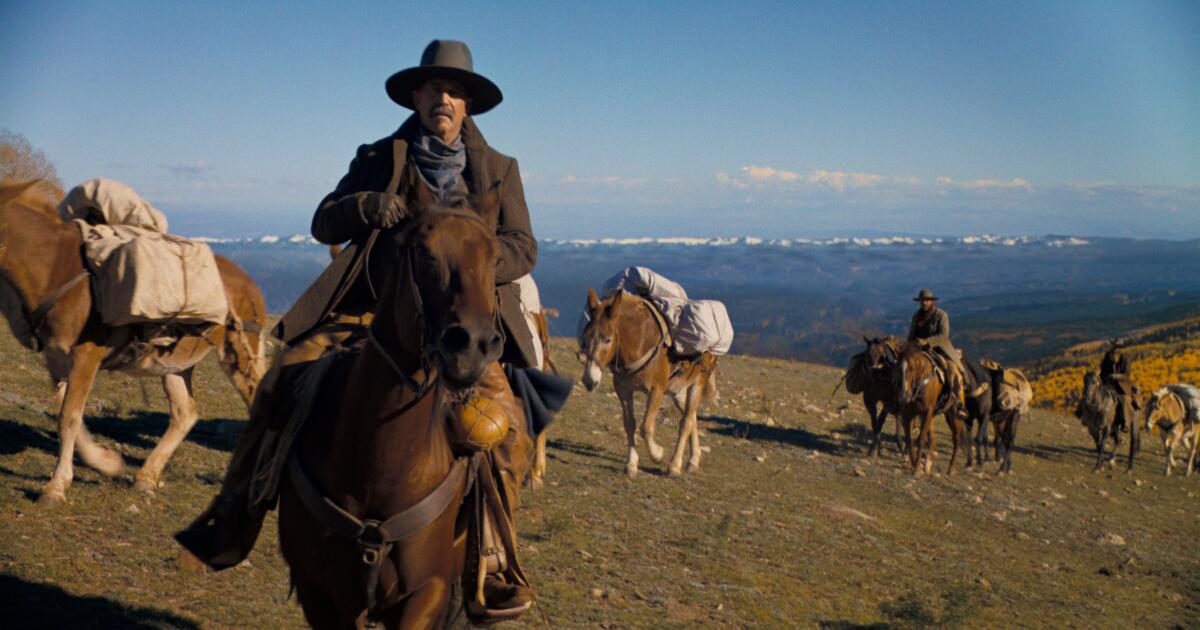Texas
Piecing Together the Story of Texas’s First Black-Owned Pottery

I chase ghosts! That is, I investigate the forgotten spirits and legacies of enslaved and free potters in Texas during and after the Civil War in the United States of America. This journey began with a 1991 conversation with my graduate advisor John Brough Miller, professor of ceramics at Texas Woman’s University in Denton, Texas, during which he shared the legend of John McKamie Wilson and enslaved potters in Seguin, Texas. Nearly a quarter century later, in 2014, an internet search led me to the website of the Wilson Pottery Foundation, created by the descendants of Hiram, James, and Wallace Wilson, the founders of H. Wilson and Co. Pottery. Three years later, in 2017, I attended the annual Wilson Pottery Show at the Sebastopol House in Seguin and was surprised by the amount of Wilson antique pottery on display and the number of collectors of it. I left the show with a heightened interest in the Wilson Potters.
In 2018, Tarrant County College District, where I was an assistant professor of Ceramics, awarded me faculty leave to research the H. Wilson & Co. Pottery, which is located in Capote, Texas, approximately 48 miles east of San Antonio and 12 miles east of Seguin. A search on Ancestry.com led me to a database of United States craftspeople ranging from 1600 to 1995, which lists Hiram Wilson as the founder of H. Wilson and Co. Pottery. Hiram was formerly an enslaved potter at the Guadalupe Pottery owned by John McKamie Wilson from Mecklenburg County, North Carolina. Scholars believe H. Wilson and Co. Pottery was the first business owned by an African American in Texas.
A deeper dive led to the other Wilson Potteries (designated as sites by the Texas Historical Commission, which identifies them by number) in the Capote area, including the aforementioned Guadalupe Pottery (41GU6), which was the first Wilson pottery site operated by John McKamie Wilson and his enslaved potters. H. Wilson & Co. (41GU5) was the second site, started by formerly enslaved potters from the Guadalupe site. The third Wilson pottery site (41GU4) was the Durham-Chandler Pottery, owned by Marion “MJ” Durham, a White man, and John Chandler, a formerly enslaved potter trained in the acclaimed Edgefield District of South Carolina. (These sites are often referred to as “First Site,” “Second Site,” and “Third Site” by collectors to help differentiate the pottery produced at each. Second Site pieces, for instance, are more valuable than First Site pieces.) After Hiram died in 1884, H. Wilson & Co. was believed to have merged with Durham-Chandler to become Durham-Chandler-Wilson. According to the United States Craftsperson Files database, Durham-Chandler-Wilson was founded in 1870, which may indicate that Hiram worked at the third site with James, Wallace, and other itinerant potters.

I propose that the relationship between these three sites might stretch back further than folklore holds. What if Marion “MJ” Durham and John McKamie Wilson’s families knew each other in Mecklenburg County, North Carolina? What if Durham was one of the primary investors in the Guadalupe Pottery with John McKamie Wilson? A partnership with Durham would support Wilson’s decision to build a pottery company in Capote. As a member of the Durham potting dynasty in South Carolina, the former certainly possessed the knowledge and pottery production skills to ensure a sound investment.
During my faculty development leave, I visited local historical societies, which were warm and informative. Some locations were rich in artifacts, whereas others had a wealth of documentation supporting the local community. On top of attending the 2018 pottery show at the Wilson Pottery Museum in the Sebastopol House in Seguin, I interviewed Wilson’s descendants, collectors, and others who shared various stories that led them to the show. One gentleman shared his salt-glazed one-gallon H. Wilson & Co. stamped pot he purchased at a thrift store in Austin, Texas. One notable takeaway from this interview session was how often collectors referenced San Antonio-based Texas pottery scholar and pediatrician Dr. Georgeanna Greer. She helped rediscover the Wilson potteries after the sites had been dormant for over 50 years; I discovered the depth of her research when I visited historical societies in East Texas. I was overwhelmed and excited to find letters written by her to local archivists requesting or sharing information on local pottery sites.

In 2020, I curated a solo exhibition in the Carillon Gallery at Tarrant County College South Campus in Fort Worth, Texas, which suggested a narrative and timeline to these potters by tracing the development of certain techniques. The centerpiece of the show, however, was not the ceramic pieces inspired by the Wilson potters and created for the exhibition, but rather the research identifying those who worked at one or more pottery sites seen via posters, including James and Wallace (and possibly Hiram) Wilson. Pots attributed to the first site, Guadalupe Pottery, suggests that Isaac and George Suttles, potters from Ohio, may have introduced the salt glazing technique found on pieces attributed to the first site’s pottery, as the practice originates from those trained in the North. The Suttles brothers later opened a pottery near Lavernia, Texas.
The discovery of this extensive pottery community in Capote redirected my focus toward East Texas, known as the entry point of Texas westward expansion. A visit to the William J. Hill Texas Artisans and Artists Archive was crucial to helping me collect information on East Texas potters. A visit to the Museum of Fine Arts, Houston’s Bayou Bend Collections and Garden was also helpful in allowing me to examine Wilson Pottery from all three sites. Through the former, I located a “Checklist of Texas Potters ca 1840-1940,” compiled by Bob Helberg. This list provided names of formerly enslaved potters in the East Texas region, such as Milligan Frazier, A. Prothro, Elix Brown, and Joseph Cogburn. This in turn opened up another world of research possibilities. What if the pottery of the shops praised for their magnificent work such as Guadalupe Pottery were actually produced by trained enslaved laborers instead of the shop’s namesake? In other words, did the early Texas potters continue the industrial enslavement system that made the Edgefield District community in South Carolina famous?
This research is just a start. As I journey from central Texas back to Edgefield, South Carolina, searching for pottery families who migrated west before 1860 with their enslaved labor, bits and pieces of sherds are coming together to recreate the life stories of these potters. A beautiful mosaic is beginning to emerge.









Texas
Mexican Navy medical plane lost communication for several minutes before Texas crash
Air traffic controllers lost communication for about 10 minutes with a small Mexican Navy plane carrying a young medical patient and seven others before it crashed off the Texas coast, killing at least five people, Mexico’s president said Tuesday.
Authorities initially believed the plane had landed safely at its destination in Galveston, near Houston, before learning it had gone down Monday afternoon, Mexican President Claudia Sheinbaum said. The cause of the crash remains under investigation. A search-and-resuce operation in waters near Galveston pulled two survivors from the plane’s wreckage, Mexico’s Navy said, while one remained missing.
Four of the eight people aboard were Navy officers and four were civilians, including a child, Mexico’s Navy said. Two of the passengers were affiliated with a nonprofit that helps transport Mexican children with severe burns to a hospital in Galveston.
“My condolences to the families of the sailors who unfortunately died in this accident and to the people who were traveling on board,” Sheinbaum said in her morning press briefing, without elaborating on a possible cause. “What happened is very tragic.”
U.S. Coast Guard Petty Officer Luke Baker said at least five aboard had died but did not identify which passengers.
The plane crashed Monday afternoon in a bay near the base of the causeway connecting Galveston Island to the mainland. Emergency responders rushed to the scene near the popular beach destination about 50 miles (80 kilometers) southeast of Houston.
Sky Decker, a professional yacht captain who lives about a mile (1.6 kilometers) from the crash site, said he jumped in his boat to see if he could help. He picked up two police officers who guided him through thick fog to a nearly submerged plane. Decker jumped into the water and found a badly injured woman trapped beneath chairs and other debris.
“I couldn’t believe. She had maybe 3 inches of air gap to breathe in,” he said. “And there was jet fuel in there mixed with the water, fumes real bad. She was really fighting for her life.”
He said he also pulled out a man seated in front of her who had already died. Both were wearing civilian clothes.
It’s not immediately clear if weather was a factor. The area has been experiencing foggy conditions over the past few days, according to Cameron Batiste, a National Weather Service meteorologist. He said that at about 2:30 p.m. Monday a fog came in that had about a half-mile visibility.
Mexico’s Navy said the plane was helping with a medical mission in coordination with the Michou and Mau Foundation. In a social media post, the foundation said: “We express our deepest solidarity with the families in light of these events. We share their grief with respect and compassion, honoring their memory and reaffirming our commitment to providing humane, sensitive, and dignified care to children with burns.”
Teams from the Federal Aviation Administration and National Transportation Safety Board were at the crash site Monday, the Texas Department of Public Safety said, and a spokesperson for the NTSB said the agency was gathering information about the crash. The Galveston County Sheriff’s Office said officials from its dive team, crime scene unit, drone unit and patrol responded the crash.
Texas
At least 2 killed in Mexican Navy plane crash near Galveston, Texas

A small Mexican Navy plane transporting a 1-year-old medical patient along with seven others crashed Monday near Galveston, killing at least two people, officials said.
Emergency officials rescued four people and were searching for two that were inside the aircraft, Mexico’s Navy said in a statement to The Associated Press. Four of the people aboard were Navy officers and four were civilians, according to the Navy. It was not immediately clear which ones were missing and which had been killed.
Two of the people aboard were members from the Michou and Mau Foundation, which is a nonprofit that provides aid to Mexican children who have suffered severe burns.
The crash took place Monday near the base of a causeway near Galveston, along the Texas coast about 50 miles southeast of Houston.
Mexico’s Navy said in a statement that the plane was helping with a medical mission and had an “accident.” It promised to investigate the cause of the crash.
The Navy is helping local authorities with the search and rescue operation, it said in a post on the social media platform X.
Teams from the Federal Aviation Administration and National Transportation Safety Board have arrived at the scene of the crash, the Texas Department of Public Safety said on X.
The Galveston County Sheriff’s Office said officials from its dive team, crime scene unit, drone unit and patrol were responding to the crash.
“The incident remains under investigation, and additional information will be released as it becomes available,” the sheriff’s office said in a post on Facebook, adding that the public should avoid the area so emergency responders can work safely.
Galveston is an island that is a popular beach destination.
It’s not immediately clear if weather was a factor. However, the area has been experiencing foggy conditions over the past few days, according to Cameron Batiste, a National Weather Service meteorologist.
He said that at about 2:30 p.m. Monday a fog came in that had about a half-mile visibility. The foggy conditions are expected to persist through Tuesday morning.
Texas
North Texas nonprofit 4-Legged Helpers helps keep pets fed and safe: 11 Days of Giving

As the holiday season continues, at CBS News Texas, we are once again proud to honor those making a difference in our community.
As part of CBS News Texas’ third annual 11 Days of Giving campaign, supported by Tom Thumb Albertsons, $1,000 is awarded each day to a local nonprofit making a meaningful impact.
Today, we’re introduced to 4-Legged Helpers, a non-profit helping local animal shelters keep animals safe, fed, and prevent them from being euthanized all over the Dallas-Fort Worth Metroplex.
One of those animals is Bosco.
“He’s a big old goofball,” said Carlos Renovato.
Bosco is also looking for a home. Renovato is the animal control officer in Wilmer, and he said it’s a struggle to provide for the animals he’s tasked with caring for.
“Our budget’s not enough for the resources; if an emergency comes along, they don’t have the ability to go to the vet or the funds to feed them. So, it comes down to euthanizing the dogs,” said Renovato.
Luckily, for Renovato and Bosco, they know Heather Marks and Leanne Hayden.
“We donate, we help him with food, toys, treats, things like that, if there’s anything he needs, we’ll just let him know and make sure he gets it,” said Marks.
The two founded 4-Legged Helpers.
“The animals just need help,” said Marks.
They estimate it costs around $700 per animal to get them adoption-ready.
“That’s a lot, but it’s worth it. Because they wouldn’t see tomorrow if we didn’t step in,” said Marks.
That’s why 4-Legged Helpers was selected to receive a $1,000 donation. The money will keep goofballs like Bosco happy and healthy.
“We are their voice, and if we weren’t here to fight for them, no one would be,” said Marks.
-

 Iowa1 week ago
Iowa1 week agoAddy Brown motivated to step up in Audi Crooks’ absence vs. UNI
-

 Maine1 week ago
Maine1 week agoElementary-aged student killed in school bus crash in southern Maine
-

 Maryland1 week ago
Maryland1 week agoFrigid temperatures to start the week in Maryland
-

 New Mexico7 days ago
New Mexico7 days agoFamily clarifies why they believe missing New Mexico man is dead
-

 South Dakota1 week ago
South Dakota1 week agoNature: Snow in South Dakota
-

 Detroit, MI1 week ago
Detroit, MI1 week ago‘Love being a pedo’: Metro Detroit doctor, attorney, therapist accused in web of child porn chats
-

 Health1 week ago
Health1 week ago‘Aggressive’ new flu variant sweeps globe as doctors warn of severe symptoms
-

 Maine7 days ago
Maine7 days agoFamily in Maine host food pantry for deer | Hand Off























